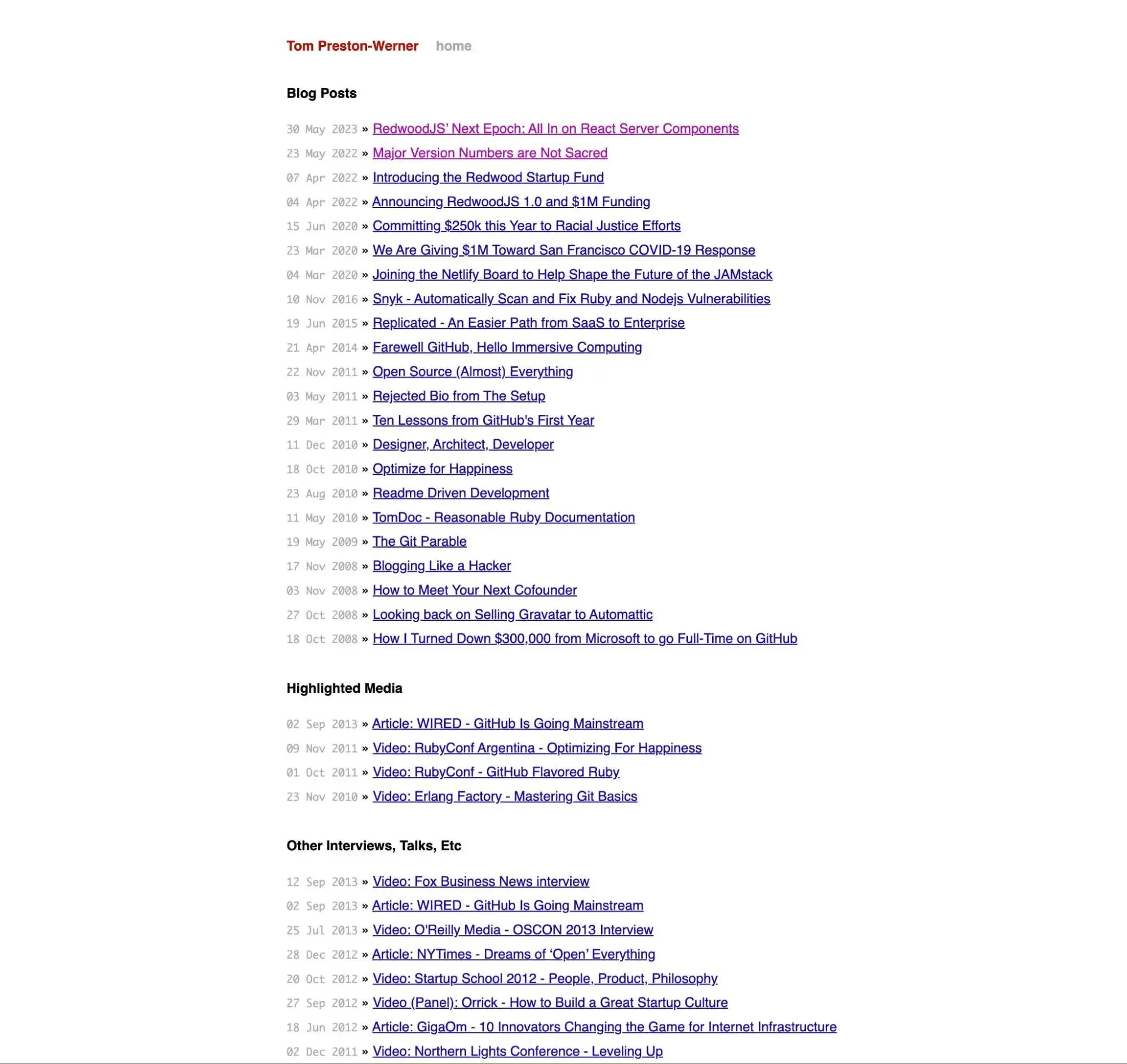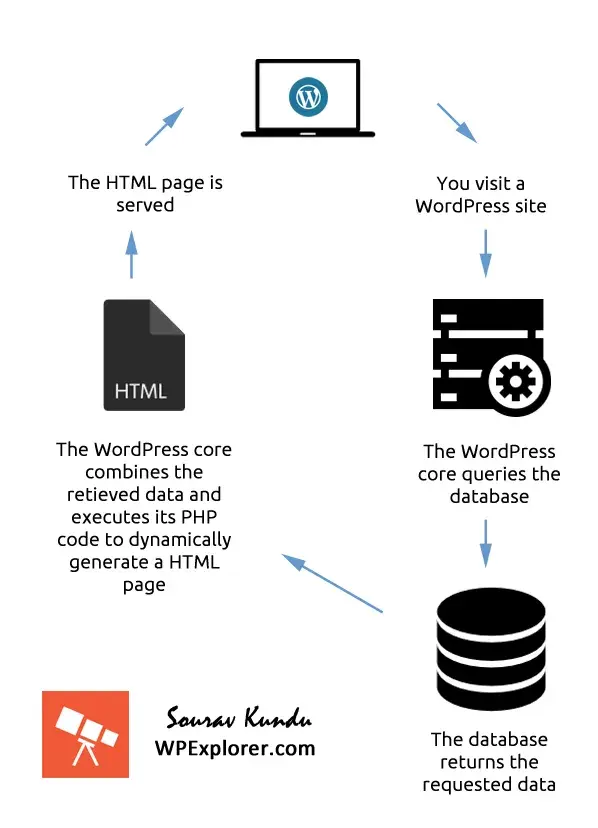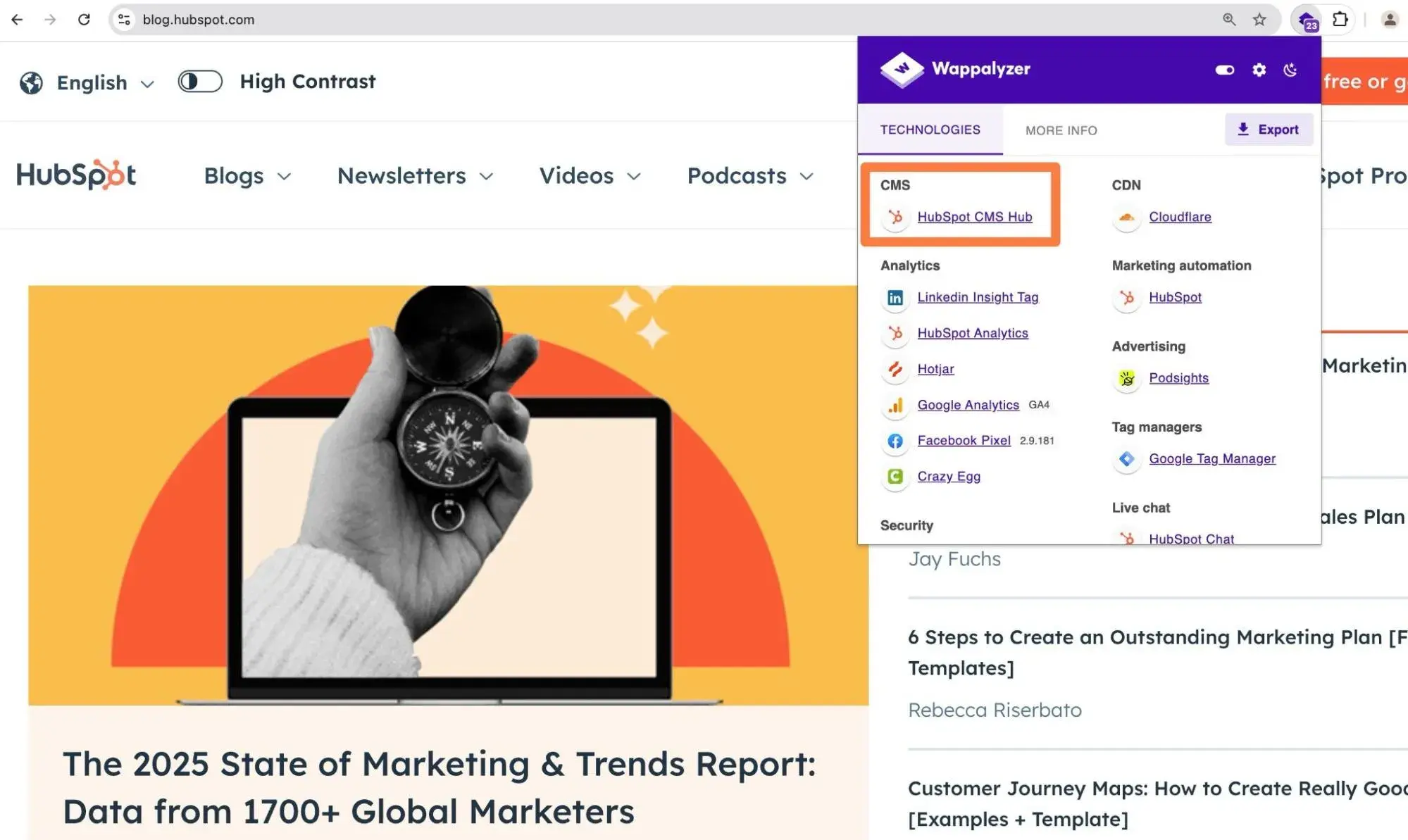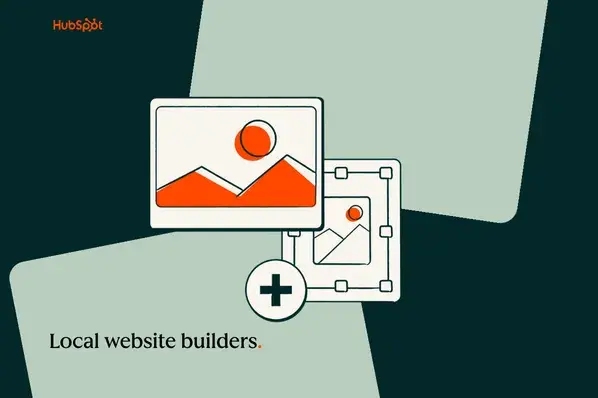If you’re trying to wrap your head around the difference between a static and dynamic website, trust me when I say that you’re not alone. It’s something that I had to figure out personally early in my site-building career, and I’m happy for a chance to share that knowledge with you.
Below, I’m going to cover the basic differences between a static and dynamic website so that you have a solid foundation. Then, I’ll go through the pros and cons of each approach so that you can decide which approach to use when you’re building your own website.
Table of Contents
- Static vs. Dynamic Website
- What is a static website?
- What is a dynamic website?
- How to Tell the Difference Between a Static and Dynamic Website
- Understanding Static and Dynamic Websites
Static vs. Dynamic Website
The difference between static websites and dynamic websites is that static websites deliver the same HTML file to every single visitor whereas dynamic websites build each page “on the fly,” which lets dynamic websites offer personalized experiences and present different information to different visitors.
No matter how complex a website appears to be, at its core a web page is just an HTML file displayed in a web browser.
When you visit a website, your browser sends a request to the web server that hosts the website. The server then responds by sending back an HTML file (along with some other related files such as stylesheets and images). Your browser processes this HTML file and shows it to you as a page.
Ultimately, both static and dynamic websites serve HTML files, but what makes a website “static” versus “dynamic” depends on how the server creates this HTML file before sending it to the visitor’s browser.
To understand the differences, let me start by taking you through how static websites work in more detail. Then, I’ll do the same for dynamic websites.

HubSpot's Free Website Builder
Create and customize your own business website with an easy drag-and-drop website builder.
- Build a website without any coding skills.
- Pre-built themes and templates.
- Built-in marketing tools and features.
- And more!
What is a static website?
A static website is made up of a fixed number of pre-built files stored on a web server. These files are written in HTML, CSS, and JavaScript, which are called “client-side” languages because they execute in the user’s web browser.
When a user requests a page from the server with a URL, the server returns the HTML file that is specified by the URL and any accompanying CSS and/or JavaScript files.
During this exchange, the web server does not alter the files before they’re shipped to the user, so the web page will look the exact same to everyone who requests it. The content is “static” — the only way to change how the website looks is by manually changing the content of the files.
This doesn’t mean that static websites can’t be interactive or engaging. They can still have clickable links and buttons, images and videos, CTAs, forms, digital downloads, and animations powered by CSS or JavaScript. With enough skill, you can even get a static website to look pretty nice. But, a static site will always look the same to everyone.
Common examples of static websites include the following:
- Resume websites.
- Portfolio websites.
- Brochure websites.
- One-off landing pages.
- Other informational or read-only sites.
These websites are small (three to four pages or fewer), limited in content, and don’t require personalized content or frequent updates.
You can create larger static websites, but you’ll typically want to do so with the help of a static site generator to do that. In a nutshell, static site generators help you generate the static HTML files that comprise your site, which can eliminate the need to manually update every single file whenever you want to make a change to your site.
Best for: I think the static approach can work for sites that don’t have a lot of content and don’t need personalization, such as portfolios, brochure websites, resumes, etc.
Static Website Example
Now, let’s look at a real-world static website example so that you can see what this type of site looks like “in the wild.”
This is a bit misleading, though, because there’s no foolproof way to tell if a website is static or dynamic just by looking at the front end. However, by looking at the underlying code of a website, you can get a pretty good idea of whether it’s a static vs dynamic website. I’ll also share some tips on how to tell the difference later in this post.
For a static website example, I want to share the personal site of Tom Preston-Werner, the founder and former CEO of GitHub.

Tom uses a static approach powered by the Jekyll static site generator. Because Tom’s site has more than four pages, Jekyll makes it a lot easier for him to create the static HTML files that comprise his site.
While static websites don’t need to be this simple in terms of design, I think it’s a great example of what a barebones static website might look like.
If you want to see some more examples, I recommend browsing our picks for the best static website examples.
Static Website Advantages
Based on my experience, here are some of the main advantages of using a static website:
- Simplicity. Static websites are very easy to maintain because they have no “moving parts,” so to speak. You can just upload the static files to any host, and you’re good to go. You could code the site yourself or use a static site generator.
- Performance. Because static sites don’t require any server-side processing, they’re very performance-friendly. You won’t need to mess around with caching or database optimization, which are requirements for most dynamic sites.
- Affordability. Hosting a static website is incredibly affordable. You could even use a free host like Cloudflare Pages while still achieving excellent performance.
- Secure. Because static sites have no backend, they’re very secure. A lot of the malicious attacks that work against dynamic sites won’t work against a static website.
Static Website Disadvantages
While there are some attractive advantages to using a static website, I also think it’s important to highlight some of the notable difficulties:
- Limited functionality. There are some types of sites that just plain require dynamic functionality, such as ecommerce stores, membership websites, online courses, and so on.
- Harder to update. When you want to make changes, you’ll need to update each file and then re-upload the files to your server. This can be especially difficult as your site grows in scale. There are static site generators that can help simplify this process, but it’s still not nearly as easy as updating a dynamic website.
- More difficult for teams. Tying with the point above, static websites can be especially difficult for teams. With a dynamic website, your marketing team can easily make changes themselves. With a static site, you’ll typically need to involve your engineering teams whenever the marketing team wants to make an update.
- Lack of personalization. Because every single visitor is served the same static file, you can’t easily add personalization to your static website (unless you do it on the client side with JavaScript). This could make your site less user-friendly and impact the effectiveness of your marketing strategies.
For these reasons, most websites that you use today are built dynamically. Next, let’s explore what that means.

HubSpot's Free Website Builder
Create and customize your own business website with an easy drag-and-drop website builder.
- Build a website without any coding skills.
- Pre-built themes and templates.
- Built-in marketing tools and features.
- And more!
What is a dynamic website?
A dynamic website generates a page dynamically by processing code and querying databases on the server before delivering the final web page to the visitor.
A dynamic website can deliver the same content to each visitor, similar to a static website. However, because of the dynamic processing happening on the server side, dynamic websites also have the ability to adjust the content that each visitor sees based on a variety of factors, including time of day, data on the user (such as content or products that they’ve previously engaged with), user preferences, and so on.
To achieve greater flexibility on the front end, dynamic websites require more complexity on the back end.
These websites don’t store each page as its own HTML file. Instead, web servers build pages “on the fly” — when the user requests a page, the server pulls information from one or multiple databases and constructs an HTML file custom-built for the client. Once the page is built, the HTML file is shipped back to the user’s browser.
One very common example of a dynamic website is a site built with the WordPress software. Here’s how WordPress works in its default configuration:
- A person tells their browser to connect to a page on the WordPress site by entering a URL.
- WordPress queries its database to get the content for that page.
- WordPress executes PHP at the server level to take that content and turn it into finished HTML.
- The WordPress site’s server delivers the finished HTML and CSS to the visitor’s browser.

To build pages on the backend, dynamic websites employ server-side scripting languages like PHP, Python, Ruby, or server-side JavaScript, in addition to client-side languages (HTML, CSS, and JavaScript). Depending on the amount of data that is being pulled to construct the page, this process can get quite complex.
However, the user doesn’t see any of this process — they only see the web page loaded in the browser, the same as with static sites.
These days, most websites you use employ at least some dynamic practices, including the following types of sites:
- Online stores.
- Social media sites.
- Membership sites.
- News sites.
- Blogs and other publishers.
- Web applications.
For example, consider an ecommerce site whose homepage recommends products based on what they think you’ll want to buy. This means that every visitor will see a slightly different home page.
Of course, it wouldn’t make sense to hard-code a page for each person and store it on the server. Instead, server-side code works to determine what content you should see, fetch that content from various databases, and build a page from it.
Best for: I think that most modern websites will benefit from the dynamic approach, including blogs, online stores, membership sites, apps, and more.
Dynamic Website Example
Nowadays, most popular websites use the dynamic approach, so it’s quite easy to find examples of dynamic websites. For example, almost all WordPress sites are dynamic websites (though it is possible to use WordPress to build static websites).
To highlight one specific example, though, I want to look at The New York Times.
The New York Times uses its own custom content management system named Scoop. When editors and journalists add articles to the site, those articles will automatically appear on the front end.
When visitors go to the New York Times, they’ll see the most recent articles, with some personalization added as well. Users can also log in to their own account to further personalize the content that they see.

Dynamic Website Advantages
The advantages and disadvantages of dynamic websites are essentially the opposite of static websites.
Based on my experience, here are some of the main advantages of using a dynamic website:
- Personalization. Because the web server “builds” the page on the fly for each visitor, you can offer personalization even down to the individual user level. You don’t have to implement this level of personalization, and some dynamic websites still deliver the exact same content to everyone. However, this type of personalization is available if you want it.
- More functional websites/apps. If you want to build more advanced websites or apps, they’ll typically require dynamic functionality. For example, ecommerce stores, membership sites, social communities, and so on.
- Easier content updates. Most dynamic websites include some type of backend admin panel where even non-technical users can update content. As soon as these content updates are published, they’ll be live on the site immediately. With a static website, you would need to rebuild and redeploy all of the static HTML to make updates live.
- Easier design updates. The same principle applies to the design of your site. You can make small or large changes to your site’s design, and those changes will instantly be live on your site.
- Content scalability. Because dynamic websites can generate pages on the fly, they’re a lot easier to scale if you have hundreds, thousands, hundreds of thousands, or even millions of pieces of content. You can store all of the data in a single database rather than needing to spread it out over individual files.

HubSpot's Free Website Builder
Create and customize your own business website with an easy drag-and-drop website builder.
- Build a website without any coding skills.
- Pre-built themes and templates.
- Built-in marketing tools and features.
- And more!
Dynamic Website Disadvantages
With that being said, dynamic websites aren’t perfect. In my opinion, these are some of the notable downsides of the dynamic approach:
- Hard-to-code from scratch. While you could build your own dynamic system from scratch, it’s very complex. Instead, you’ll usually want to use an off-the-track content management system (CMS) like HubSpot Content Hub or WordPress.
- Performance optimization can be more complicated. You can absolutely build fast-loading dynamic websites. However, because there are more “moving parts,” optimizing a dynamic website for performance can take more effort than it would for a static website.
- Harder to secure. While you can certainly build secure websites with the dynamic approach, dynamic websites have more “surface area” for malicious actors to attack, so they’ll require some more work to secure. One way to avoid this would be to use a hosted tool that handles security for you, such as HubSpot Content Hub.
How to Tell the Difference Between a Static and Dynamic Website
At first glance, I think it can be a little tricky to tell the difference between a static vs dynamic website. This is because a lot of the differences are happening on the server side, which aren’t visible to the human eye.
However, I’ve learned a few different tips and tricks that you can use to try to tell the difference between a static and dynamic website.
Refresh the page.
One easy way to tell the difference is to refresh the page. If the page’s content changes when you refresh it, that’s a pretty good sign that you’re looking at a dynamic website.
However, it’s not foolproof. A lot of dynamic websites don’t change minute-to-minute, so there’s a good chance you could still see the same content even when you refresh the page.
That is, even if you see the exact same content after refreshing the page, that doesn’t automatically mean it’s a static website.
Check for dynamic functionality.
In addition to refreshing the page to see if the content changes, you can also look for other features that are the marks of a dynamic website.
One common example would be any type of user registration system. If you can register for an account on the website, you’re usually dealing with a dynamic website.
However, I think it’s important to note that some websites can still offer user registration by using a static front end with a dynamic web app. For example, Siteleaf has a static frontend powered by Jekyll. While it does have a user registration, you can see that the user-focused part is on a separate manage.siteleaf.com subdomain.
Other examples of dynamic functionality include the following:
- User preferences. While there are ways to use JavaScript to allow for user preferences on a static website, this is still usually a sign of a dynamic website.
- Shopping cart and order system. If a website has its own ordering and cart system (rather than integrating a third-party tool), it’s usually a dynamic website.
- Restricted content. If some content is restricted and requires payment or logging in, it’s probably a dynamic website (though there are ways to accomplish restricted content with a static website).
Use a website technology browser extension.
Another way to tell the difference between static and dynamic websites is to use a browser extension that can help you analyze the technologies that a website is using.
One of my personal favorites here is the free Wappalyzer extension for Chrome.
When you visit a website with Wappalyzer installed, you can view the website’s technologies by clicking on the Wappalyzer icon on your browser bar.
This information will give you a few different ways to assess if a website is static or dynamic:
- CMS. If the website is using a popular CMS like WordPress or HubSpot Content Hub, it’s a dynamic website.
- Programming languages. If the website is using PHP or other server-side languages, it’s a dynamic website.
- Databases. If the website has a database, it’s a dynamic website.

You might not see all the pieces of information for every website. However, you can still usually find enough information to make a determination.
For example, if you look at the HubSpot Blog, you can still see that it uses HubSpot CMS Hub, even though there isn’t information about databases or programming languages.

Check the backend (if you have access).
This tip won’t work if you’re trying to check someone else’s website. However, if you’re not sure whether a website that you control is static or dynamic, you can figure it out by looking at your site’s backend.
First, you can check some technical details:
- If your website has a database, it’s a dynamic website.
- If you see files on your server with the following extensions, it’s a dynamic website: PHP, CGI, AJAX, ASP, ASP.NET.
You can also look at the process for updating content.
If you make your changes in some type of content management system (CMS) and those changes instantly populate your live website, you’re working with a dynamic website.
On the other hand, if the only way to update your website is by editing the .html files directly and re-uploading them to your server, you’re working with a static website.
Understanding Static and Dynamic Websites
In the end, both the static and dynamic approach have merits — I think it really just depends on the type of site that you’re building.
Personally, I use the dynamic approach for most of the sites that I build because I appreciate the added flexibility that it gives me. However, I have used the static approach for some simple portfolio and brochure-type websites and loved how I could just throw the HTML files on Cloudflare Pages and call it a day.
Go through the pros and cons that I covered above and you should be able to choose the right approach for your own website.
Editor's note: This post was originally published in March 2022 and has been updated for comprehensiveness.

HubSpot's Free Website Builder
Create and customize your own business website with an easy drag-and-drop website builder.
- Build a website without any coding skills.
- Pre-built themes and templates.
- Built-in marketing tools and features.
- And more!
Website Development






![How to make a website with user accounts and profiles [with WordPress, Wix, and more]](https://53.fs1.hubspotusercontent-na1.net/hubfs/53/%5BUse%20(3).webp)
![How to build a Google Site that looks good and drives business [templates & examples]](https://53.fs1.hubspotusercontent-na1.net/hubfs/53/Website%20Redesign%20Terms.png)




